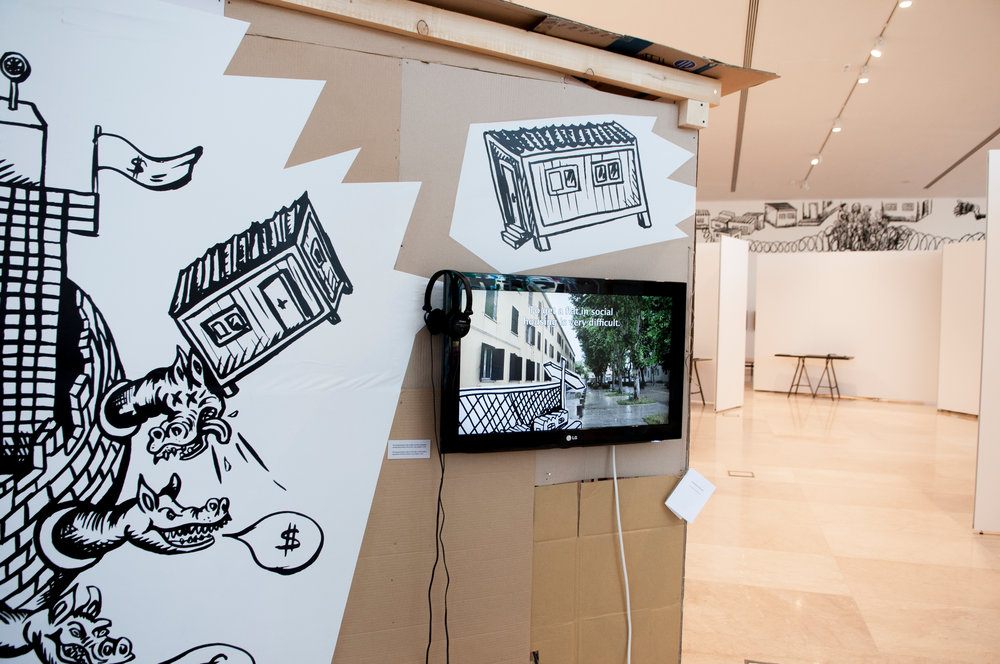
A Safe Country?
25 December 2019, The Museum of Yugoslavia, Belgrade. Accompanying discussion program of the Museum of Yugoslavia’s exhibition “The Nineties: a Glossary of Migrations”, named “A Safe Country?”, with a topic of anti-Roma policies in Europe, will be held in the building of the May 25 Museum, on Saturday, January 25, at 4.00 p.m. The program will involve Dejan Marković, President of the Forum of Roma Serbia, Saša Barbul, a Roma director, and artists Rena Redle and Vladan Jeremić, with Mira Luković, an associate of the Museum of Yugoslavia, as a moderator.
Accompanying discussion program of the Museum of Yugoslavia’s exhibition “The Nineties: a Glossary of Migrations”, named “A Safe Country?”, with a topic of anti-Roma policies in Europe, in the building of the May 25 Museum, on Saturday, January 25, at 4.00 p.m. The program involved Dejan Marković, President of the Forum of Roma Serbia, Saša Barbul, a Roma director, and artists Rena Redle and Vladan Jeremić, with Mira Luković, an associate of the Museum of Yugoslavia, as a moderator.
The exhibition “The Nineties: a Glossary of Migrations” displays an installation “Housing – a Safe Country”, which, through years of research, addresses the question of housing, aspects and causes of migration of the Roma population. This work illustrates how the anti-Roma consensus applies in Europe, but it also provides a perspective of hope through proposals of housing forms and the policy of solidarity.
President of the Forum of Roma Serbia, Dejan Marković, an expert on readmission and returnees issues, talked about the anti-Roma situation and the possibilities for overcoming it. Artists Rena Redle and Vladan Jeremić talked about the transformative possibilities of artistic practices in the scope of fight against antiziganism, as well as about changing the form of presentation of “realism” of the anti-Roma situation, taking into account “realism” as a political and an artistic concept.
One of the participants is also Saša Barbul, a Roma director from Serbia who lives in Vienna. He directed the film “Gazelle”, which is a part of the installation “Housing – A Safe Country”. On this occasion his short movie on the Roma people from Serbia, “The Other Better Life”, created in 2015 in cooperation with Philomena Grassl, was shown.
The program was held in the cinema hall of the May 25 Museum, in the complex of the Museum of Yugoslavia. Admission to the program is free, and free tickets can be taken in the ticket office of the Museum of Yugoslavia.
During the war in the nineties, a large number of Roma population became refugees. Roma men and women were forced to almost completely abandon Kosovo and seek asylum in EU countries during 1998 and 1999. After the application of the Readmission Agreement, signed in 2002, tens of thousands of Roma people were forcibly deported from Germany to Serbia, although the majority
of families had resided there for almost two decades. Most of the deported people returned to Germany again and sought asylum, until Serbia was included on the list of safe countries in 2014, which made it practically impossible for them to get asylum in the EU countries.
Antiziganism, which is a special historical and contemporary form of racism of the majority towards the Roma population, has systemic traits. Institutional racism and structural discrimination are the facts of life which this population faces every day.